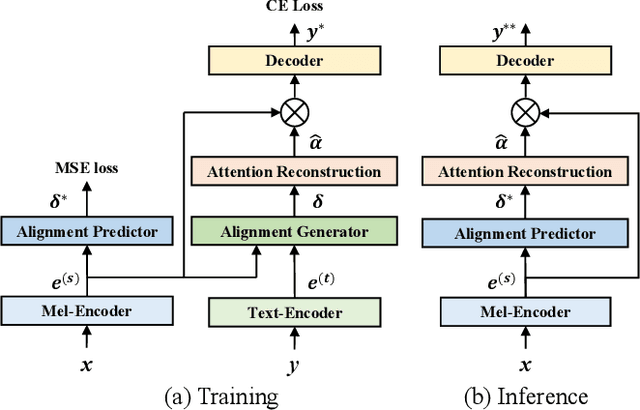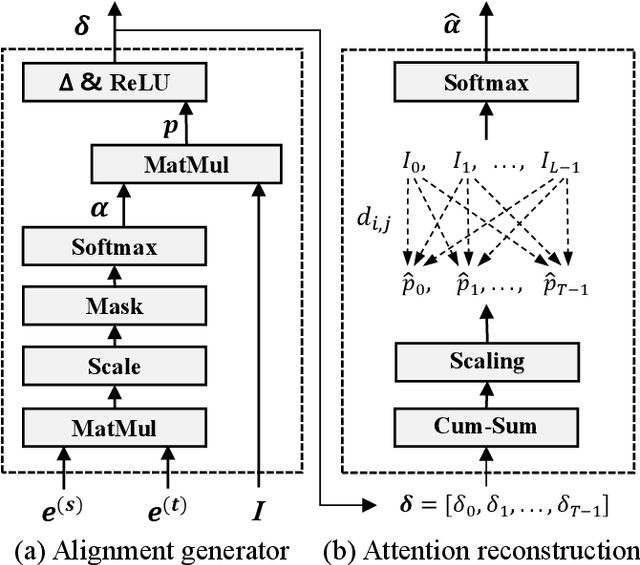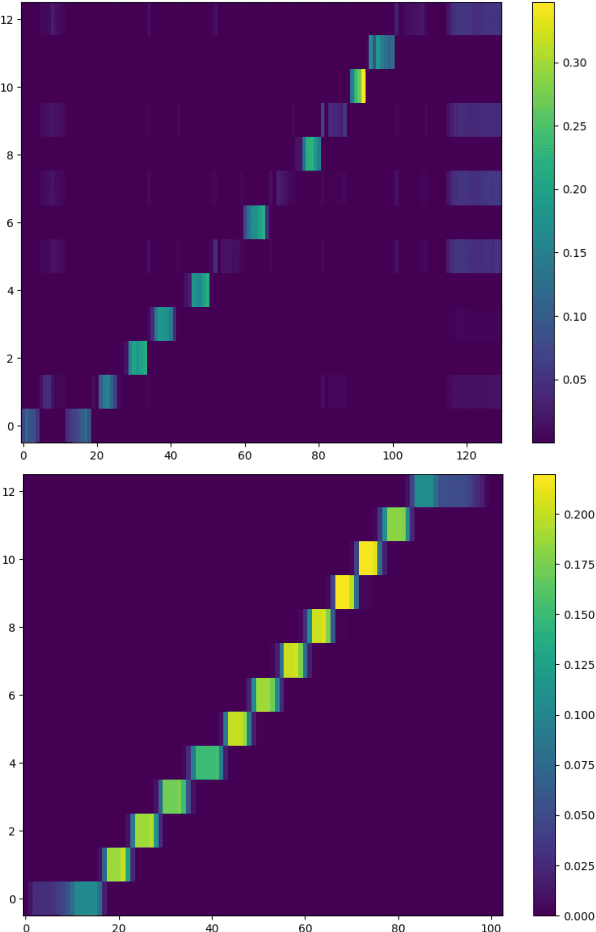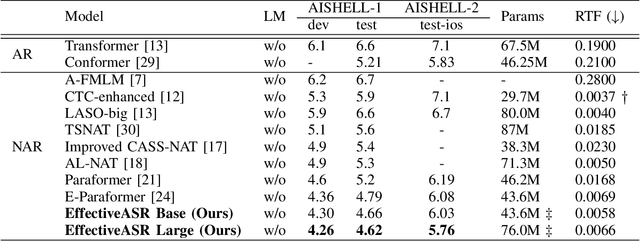Kun Zou
FunAudio-ASR Technical Report
Sep 15, 2025Abstract:In recent years, automatic speech recognition (ASR) has witnessed transformative advancements driven by three complementary paradigms: data scaling, model size scaling, and deep integration with large language models (LLMs). However, LLMs are prone to hallucination, which can significantly degrade user experience in real-world ASR applications. In this paper, we present FunAudio-ASR, a large-scale, LLM-based ASR system that synergistically combines massive data, large model capacity, LLM integration, and reinforcement learning to achieve state-of-the-art performance across diverse and complex speech recognition scenarios. Moreover, FunAudio-ASR is specifically optimized for practical deployment, with enhancements in streaming capability, noise robustness, code-switching, hotword customization, and satisfying other real-world application requirements. Experimental results show that while most LLM-based ASR systems achieve strong performance on open-source benchmarks, they often underperform on real industry evaluation sets. Thanks to production-oriented optimizations, FunAudio-ASR achieves SOTA performance on real application datasets, demonstrating its effectiveness and robustness in practical settings.
A Single-Step Non-Autoregressive Automatic Speech Recognition Architecture with High Accuracy and Inference Speed
Jun 13, 2024



Abstract:Non-autoregressive (NAR) automatic speech recognition (ASR) models predict tokens independently and simultaneously, bringing high inference speed. However, there is still a gap in the accuracy of the NAR models compared to the autoregressive (AR) models. To further narrow the gap between the NAR and AR models, we propose a single-step NAR ASR architecture with high accuracy and inference speed, called EfficientASR. It uses an Index Mapping Vector (IMV) based alignment generator to generate alignments during training, and an alignment predictor to learn the alignments for inference. It can be trained end-to-end (E2E) with cross-entropy loss combined with alignment loss. The proposed EfficientASR achieves competitive results on the AISHELL-1 and AISHELL-2 benchmarks compared to the state-of-the-art (SOTA) models. Specifically, it achieves character error rates (CER) of 4.26%/4.62% on the AISHELL-1 dev/test dataset, which outperforms the SOTA AR Conformer with about 30x inference speedup.
DASA: Difficulty-Aware Semantic Augmentation for Speaker Verification
Oct 18, 2023



Abstract:Data augmentation is vital to the generalization ability and robustness of deep neural networks (DNNs) models. Existing augmentation methods for speaker verification manipulate the raw signal, which are time-consuming and the augmented samples lack diversity. In this paper, we present a novel difficulty-aware semantic augmentation (DASA) approach for speaker verification, which can generate diversified training samples in speaker embedding space with negligible extra computing cost. Firstly, we augment training samples by perturbing speaker embeddings along semantic directions, which are obtained from speaker-wise covariance matrices. Secondly, accurate covariance matrices are estimated from robust speaker embeddings during training, so we introduce difficultyaware additive margin softmax (DAAM-Softmax) to obtain optimal speaker embeddings. Finally, we assume the number of augmented samples goes to infinity and derive a closed-form upper bound of the expected loss with DASA, which achieves compatibility and efficiency. Extensive experiments demonstrate the proposed approach can achieve a remarkable performance improvement. The best result achieves a 14.6% relative reduction in EER metric on CN-Celeb evaluation set.
 Add to Chrome
Add to Chrome Add to Firefox
Add to Firefox Add to Edge
Add to Edge